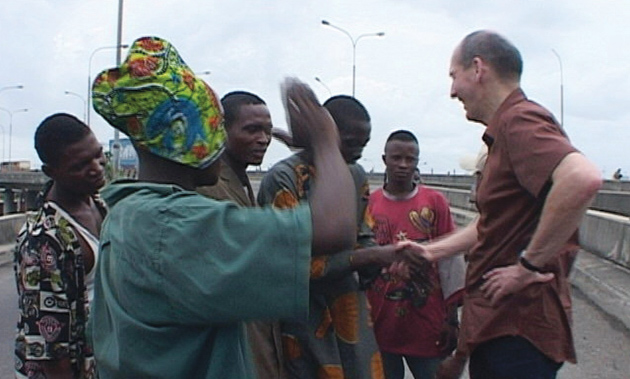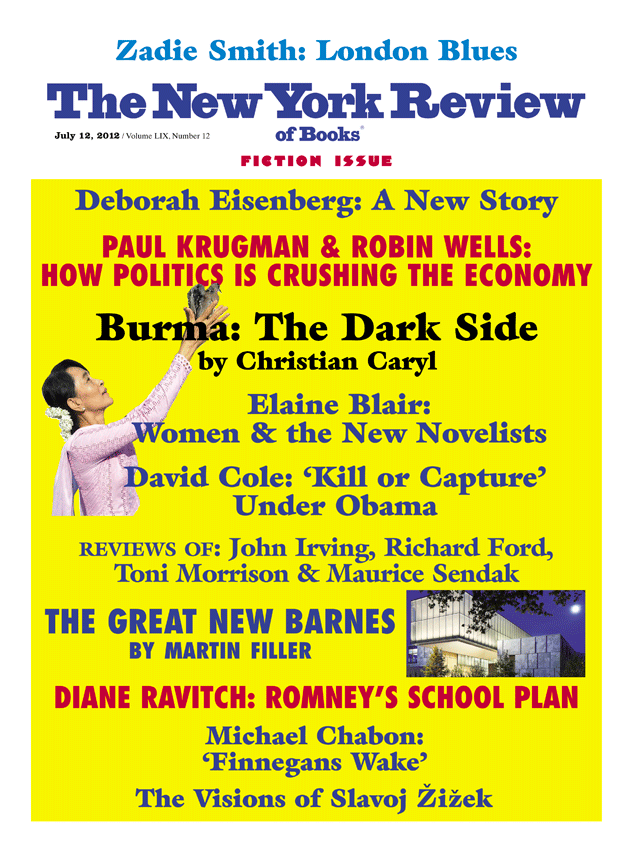In response to:
The Master of Bigness from the May 10, 2012 issue
To the Editors:
Allow me to correct a few factual errors in Martin Filler’s essay [“The Master of Bigness,” NYR, May 10]:
I was never a student at the Netherlands Film and Television Academy, precisely because my father was its director at the time.
My grandfather, Dirk Roosenburg, was not Jewish. His large family survived the war, as the fact that I did indeed produce my first architectural sketches in his office attests.
Most important is the deep misunderstanding by Filler of descriptions made in New Left Review (May/June 2005) and The New Yorker (November 13, 2006) that have since been echoed so many times that they have become “fact”: that I was “too scared by Lagos’s chaos” to get out of the car. An off-the-cuff self-deprecating remark, made in a lecture, about my initial impressions of the city during a first visit that was followed by dozens more, has congealed into a grotesque caricature of a decade’s worth of intensive study of and immersion in the city. (The irony is that in Lagos in the 1990s, inside a car—sometimes stripped of its parts while sitting in traffic—could be a dangerous place.)
That first visit to Lagos in 1996—near the end of a series of military dictatorships—was with students from Harvard, part of a “project on the city” that researched how the accelerating process of urbanization in areas other than the West is changing the nature of the city itself. Lagos was a city about which very little was known. To develop an intimate knowledge of it, we matched Harvard students with students of the University of Lagos, so that the paired researchers could observe and document any part of the city. I continued that research over the ensuing years, not from a car but on the ground.
At some point, to understand a vast amount of details, I felt the need for a more objective overview, and hired a helicopter. The bird’s-eye view is a critical part of the architect’s repertoire. The depiction of this as evidence of indifference or remoteness is nonsensical.
A final error: contrary to Filler’s article, my book on Lagos did not appear in 2008; in fact it still has not appeared. I am currently writing it; it will consider in detail the varying reactions our research provoked—without ever having been published in full—in the West and in Africa itself. What has appeared out of our research is a documentary, Lagos Wide and Close (2006), made by Bregtje van der Haak, widely distributed on DVD.
Rem Koolhaas
Rotterdam, The Netherlands
Martin Filler replies:
My regrets to Rem Koolhaas for stating that his grandfather Dirk Roosenburg was Jewish. This misapprehension has been corrected in The New York Review’s online edition and will be when my piece on Koolhaas reappears, in somewhat different form, in volume two of my Makers of Modern Architecture, which will be published by New York Review Books.
However, I am surprised that for someone so concerned about his image and the spread of misinformation, neither Koolhaas nor his office has bothered to correct his Wikipedia entry, which states that he studied at the Netherlands Film and Television Academy. No doubt this is because Koolhaas collaborated with a number of students of the academy on film projects beginning in 1962. This, too, has been corrected in the online edition.
I can fully understand Koolhaas’s defensiveness about George Packer’s characterization in The New Yorker of his response to Lagos, and I welcome his further comments on his work there. But any allegation of my “deep misunderstanding” seems misdirected. One can hardly blame Packer for referring to what Koolhaas calls “an off-the-cuff self-deprecating remark,” as uncomfortable as it apparently is for the subject of this remark to be cast in a less-than-heroic light.



